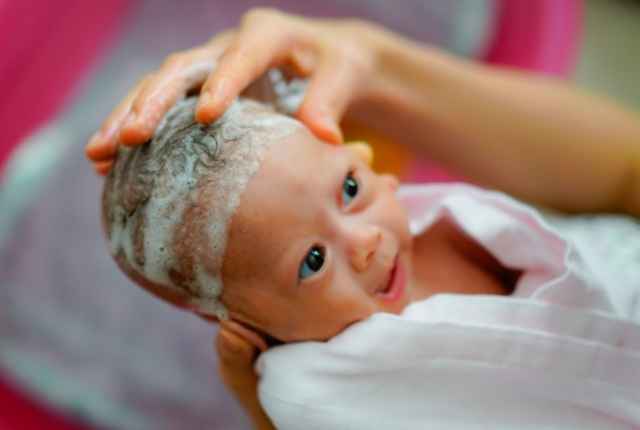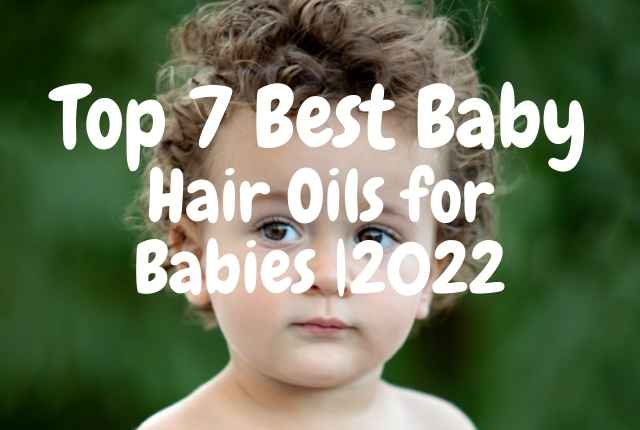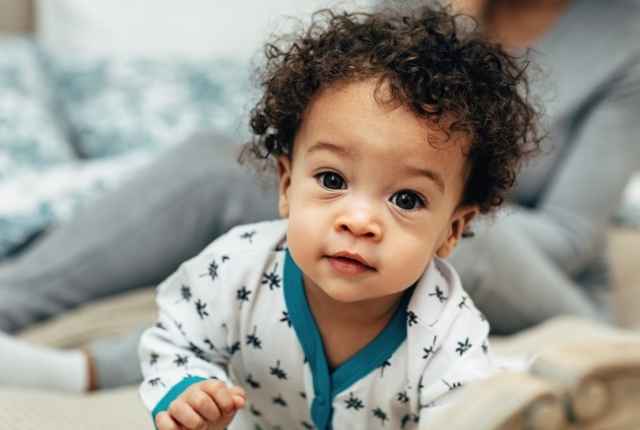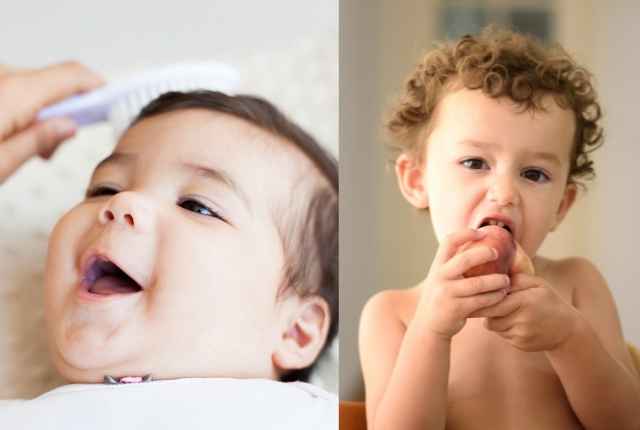If you have a baby, then it is likely that you are curious about what happens to their hair as they grow.
One question that many parents ask themselves is when does baby hair texture change?
Parents also want to know what is the baby hair texture predictor? And whether such a thing exists
One question that many parents ask themselves is when does baby hair texture change?
In our opinion, the answer to “when does a baby’s hair texture change” is that the baby hair texture changes continously over a period of 24 months and then remains unchanged for the rest of their lives.
The answer to when do babies get their hair texture is around 24 months.
There could be a variety of changes that it will undergo during this period.
READ ALSO : Learn if your baby will have curly hair– 9 Proven Signs Your Baby Will Have Beautiful Curly Hair That You Love
They could transition from natural curls to straight locks, from frizzy hair to soft hair.
And there could be various reasons why it changes during this period.
If your child’s hair looks like silky strands of silk, then you might want to know when this texture will change and how much time you have before the changes start happening.
In this blog post, we will answer these questions for you!
The texture of your baby’s hair goes through the following phases:
Most babies are born with hair that is incredibly soft, straight, and thin. The texture can be likened to a cotton candy-like feeling that children love because it feels so good on their skin.
After six or seven months old, the hair will start to get thicker where individual strands are not as easy to see under the scalp anymore.
The texture of your baby’s hair will keep changing a lot over the first 24 months or so, by when it reaches the final state. You will be surprised at how much it can change.
To understand why the hair texture of your baby changes you must understand some basic concepts about hair and the growth process.
Table of Contents
- Overview of the anatomy of hair:
- Does hair type change with age?
- What Color Hair Will Your Baby Have?
- What causes the baby’s hair to be straight or curly?
- Will shaving your baby’s head make the hair grow thicker?
- Will cutting your baby’s hair change the texture?
- What is the best baby hair texture predictor?
- How do genes determine your baby’s hair color and texture?
- READ NEXT
Overview of the anatomy of hair:
You can get more information here
The foundation for hair growth is called the follicle. There are millions of hair follicles on a person’s body but in babies they are mainly found on the scalp. They are governed by hereditary genes and hormones.
- Hair Follicle: The follicle is the living part of the hair. It lies deeply within the inner layer of the skin. The skin has two layers; the outer layer is the epidermis, and the inner layer is the dermis. The lower end of the follicle is surrounded by blood vessels and nerves. They provide support and nourishment for the hair.
- Hair Shaft: The shaft is the part of the hair that we see above the skin and this part is made up of dead cells. That is why the stylist can cut your hair and there is no pain.
- Hair Root: The root is shaped like a bulb at the base of the shaft and this attaches the shaft to the follicle.
The hair shaft has three layers:
- the inner medulla which is mainly noted in thicker hair
- the middle cortex, which is responsible for the strength, color, and texture of hair
- the outer cuticle that is thin and colorless but protects the cortex.
The total number of hair follicles that a baby will have are formed while the baby is in the womb. These are present by about the 22nd week, (between 5 and 6 months) of pregnancy. There are an estimated 5 million follicles on the body with approximately 100,000 on the scalp. Blondes tend to have approximately 150,000 which is more than brunettes (100,000 – 110,000) and redheads (90,000). Although no new follicles develop after birth, there are some losses as we get older.
Does hair type change with age?
As the baby goes through the different stages of development in the womb and beyond, the type of hair on the body and scalp also changes.
There are 3 different types of hair
1.Lanugo Hair
Lanugo Hair is a very thin, straight, soft, and unpigmented hair that covers almost the entire body of the baby in the fourth or fifth month of pregnancy and usually disappears by the seventh or eighth month. It is sometimes present at birth and disappears shortly afterward. It is not present on the palms, soles, or lips. It is mainly for the warmth and protection of the baby. Preterm babies have more lanugo hair than full-term babies.
2. Vellus Hair
Vellus Hair is short, light colored, soft, and thin and it covers most of the body in a manner that is like lanugo hair.
It is sometimes referred to as “peach fuzz.”
Vellus hair plays an important role in regulating the body’s temperature by the process of evaporation; it also heightens the person’s sensation such as detecting the presence of an insect before being bitten. Vellus hair is in abundance on your baby’s head and may account for 6-25% of the scalp hair. This scalp hair will eventually be replaced by terminal hair.
3. Terminal Hair
Terminal Hair is darker, thicker, and longer. It is usually present on the scalp by the age of 2.
Later in life around the age of puberty, this type of hair will start to grow in certain areas, including the armpits and the genital areas.
Boys will also have hair growing in other areas of the body such as the chest, abdomen, back, feet, arms, inner thighs, beard, and moustache. This is due to the influence of hormones known as androgens.
There are 4 phases of hair growth:
Hair grows in 4 phases.
Not all the hair follicles are in the same phase of growth at the same time, therefore there will always be many strands of hair on the body and scalp under normal circumstances.
1. Anagen
Anagen is the active growth phase. On the scalp this phase usually lasts 3-7 years, whereas on the other parts of the body it may last only 4-7 months. Hair grows at a rate of about half-an-inch each month or six inches each year. The longest hair growth usually occurs in people of Asian origin. The length of the hair usually mirrors the duration of this growth phase, therefore short hair has a shorter anagen phase and conversely for long hair.
2. Catagen
Catagen is a transitional phase between Anagen and Telogen. During this time the hair bulb is pushed upwards, as the new hair begins to form, and the shaft becomes keratinized, or strengthened by the addition of the protein keratin. It appears short and thick and is commonly known as “club hair.” This phase may last from 10-21 days. Approximately 3% of the hairs will be in this phase at any given time.
3. Telogen
Telogen is the resting phase where no further growth occurs. The follicle is at rest and the club hair is fully formed. This may last 3-9 months after which the cycle might restart at the anagen phase or simply shed as the exogen phase. At any given time about 10-15% of the hairs will be in this phase.
4. Exogen
The Exogen phase represents the ultimate shedding of the hair. It is estimated that there may be approximately 50-100 strands of hair that are shed daily from the scalp.
However, within the first three to six months there may or may not be noticeable hair loss especially at the back of the head. This loss of hair is quite normal, and the hair will regrow and be stronger and longer. The texture might be noticeably different especially in babies of African heritage.
Hence all these changes causes the hair texture of the baby to change over the first 2 years and then there is not much change thereafter.
What Color Hair Will Your Baby Have?
Everyone’s hair has melanin, which is the pigment responsible for the hair color. There are two different types of melanin, and they are comprised of four different pigment colors. Each strand of hair has a combination of these pigments but in varying amounts. The color of the hair depends on the ratio of the melanin pigments that are present. You can try to predict your baby’s hair color based on your family members, but the ultimate color is governed by the baby’s genetic makeup.
You can try to predict the color of the hair by clicking here
Natural Melanin Pigments
These are the Two types of Melanin pigments
- Eumelanin: – This contains the pigments that give the hair the black and brown shades. The baby will have dark hair or black hair.
- Pheomelanin: This contains the pigments that give the hair the red and yellow shades.
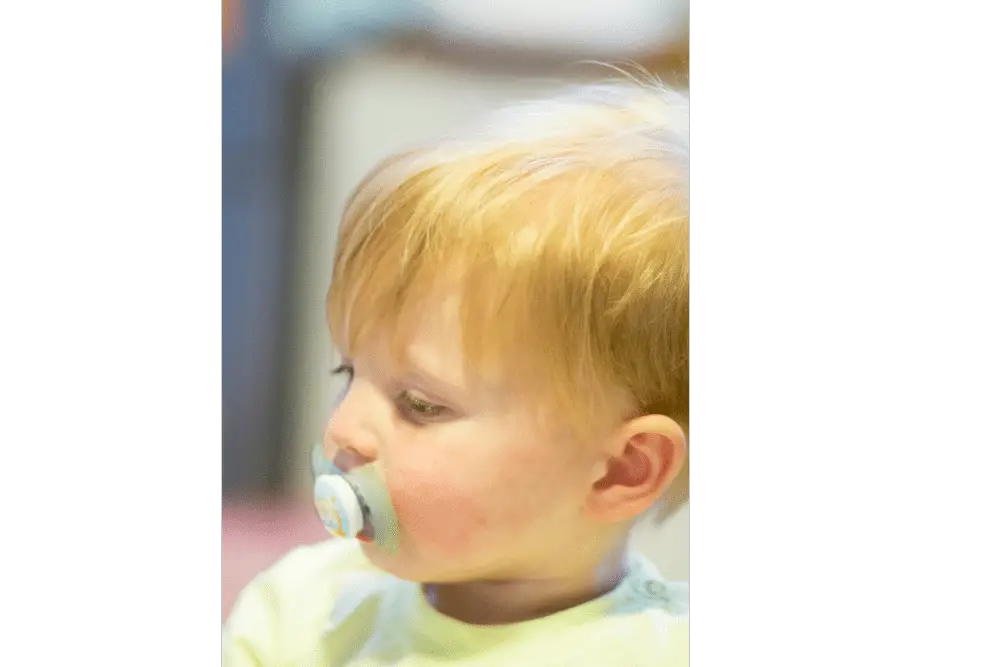
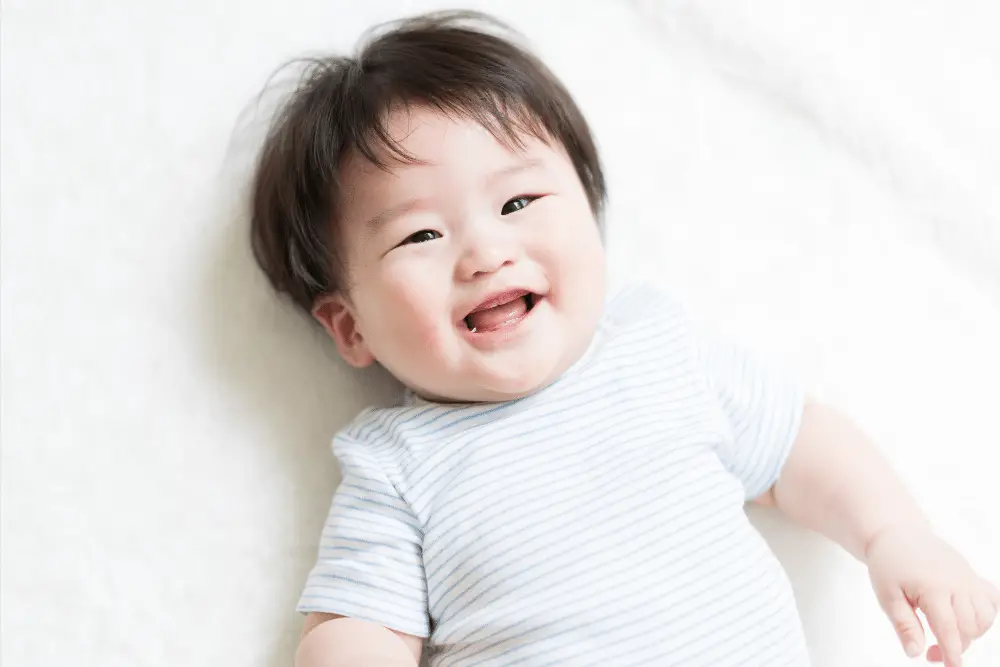
Blonde and red hair have more pheomelanin than eumelanin and conversely for black and brown hair. In certain instances, the hair color changes with time. Some children have blonde hair but as they grow older their hair gets darker with age. This may be due to the later activation of eumelanin pigments. As we all know, most people’s hair turns gray as they get older. This is because the hair follicles lose their ability to produce melanin over time. This is a part of the natural aging process.
What causes the baby’s hair to be straight or curly?
There are many parents who wonder why their baby’s hair is straight and silky at birth while they have coarse kinky hair on both sides of the family. While inside the womb, the mother’s amniotic fluid keeps the hair smooth.
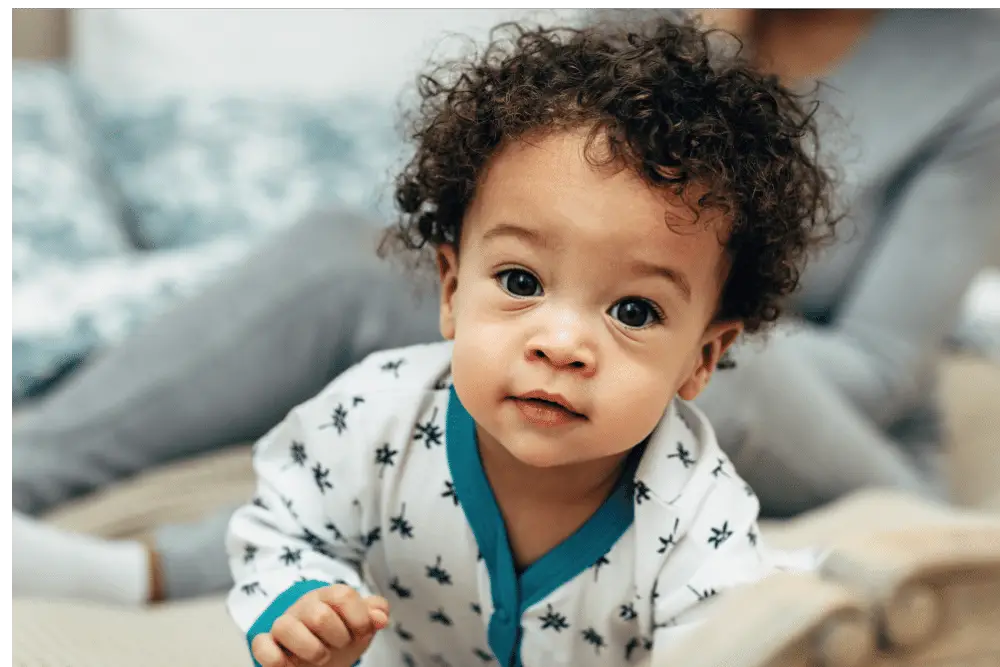
Hair texture is determined by the genetic makeup of an individual. If Mom and Dad and all their family members have straight hair, then it is unlikely that their baby will have kinky hair. However, if there are a mixture of genetic differences in the combined families, the baby’s hair might be initially straight but may eventually become curly or even kinky in later life.
According to a report from the genetic department of Stanford University, there is a direct relationship between the shape of the follicle and the nature of the shaft:
- Straight hair – if your baby’s hair is straight the follicles are round
- Curly hair – if your baby’s hair is curly the follicles are oval
- Kinky hair – If your baby’s hair is kinky or wavy, the follicles are not quite oval and not quite round.
However, the baby’s genes are the underlying determinant of the baby’s type of hair.
Different types of follicles produce different types of hair shafts. If your baby inherits genes for both straight and curly hair, then the hair may have curls or may be bone straight depending on the ratio of round and oval follicles.
READ ALSO : Learn if baby hair can change – Can a baby’s hair change from straight to curly?
Will shaving your baby’s head make the hair grow thicker?
No. There are many anecdotes about people noticing that their baby’s hair appears to grow thicker after shaving or cutting. This is only a perception because when the finer tips of the hair shaft are removed, the shaft then appears wider and since most of the strands will be on the same height, they appear to be thicker. The width and length of the hair are determined by the genetic makeup of each person.
Click here to listen to the podcast by.an Utah Pediatrician, Dr. Cindy Gellner, as she addresses several misconceptions relating to your baby’s hair.
Will cutting your baby’s hair change the texture?
No. The texture of your baby’s hair might appear to change if the hair is cut during the vellus phase. Remember that the terminal phase might not have started at the time of the first few haircuts. However, after completion of the terminal phase, the texture will remain the same. The genes will determine the ultimate hair texture.
What is the best baby hair texture predictor?
Is it possible to predict your baby’s hair texture?
There is no perfect baby hair texture predictor.
Your baby’s hair texture is determined by the genes that are inherited from both Mom and Dad. Therefore, the most likely predictor would be the texture of the parents’ hair. However, it is not impossible for parents with straight hair to have a baby with curly hair and vice versa. This is because there are many different genetic combinations that are possible with each pregnancy.
How do genes determine your baby’s hair color and texture?
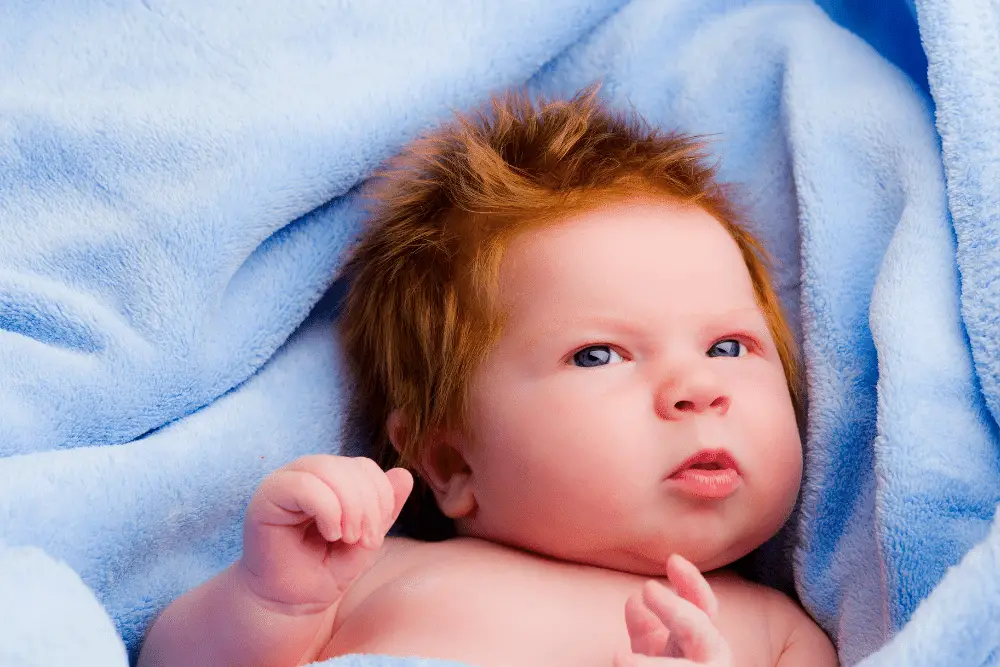
Genes are the building blocks of heredity. Everybody has two copies of each gene and one is inherited from each parent. Each person has about 100,000 genes, therefore there are many different combinations of traits that may be inherited during each pregnancy. Many genes play a role in determining which traits each baby will inherit. Some genes are more dominant than others, but although credible estimates may be made it is impossible to predict the exact outcome of a baby’s hair texture and color.
As previously mentioned, there are hormones that can affect the texture, thickness, and location of hair growth. It should also be noted that nutrition (malnutrition), certain chemicals (relaxers) and medications (chemotherapy), can affect the hair characteristics that were genetically pre-determined.
Despite the anxieties about what a baby will look like, the overall health of the newborn is of paramount importance and the hair color or texture should be considered an added touch of pleasure.
READ NEXT
15 Proven Signs Your Baby Will Have Beautiful Curly Hair That You Love
If you’ve ever wondered if your baby will have curly hair, there are signs to…
How to wash baby hair without getting water in the eyes
Babies are sensitive to eye infections and they can cause serious problems in the future….
Top 7 Best Baby Hair Oils for Babies |2022
Baby hair oil is a very important product for babies. It is an essential part…
Coconut Oil for Babies Hair – An Essential Guide
What is Coconut Oil? Coconut oil is a natural hair care product that is used…
9 Best Curly Hair Products for Babies in 2024
If your baby has curly hair, I don’t need to tell you how hard its…
Can a Baby’s Hair Change from Straight to Curly?
One of the common questions that I see in natural hair forums include ‘how come…



